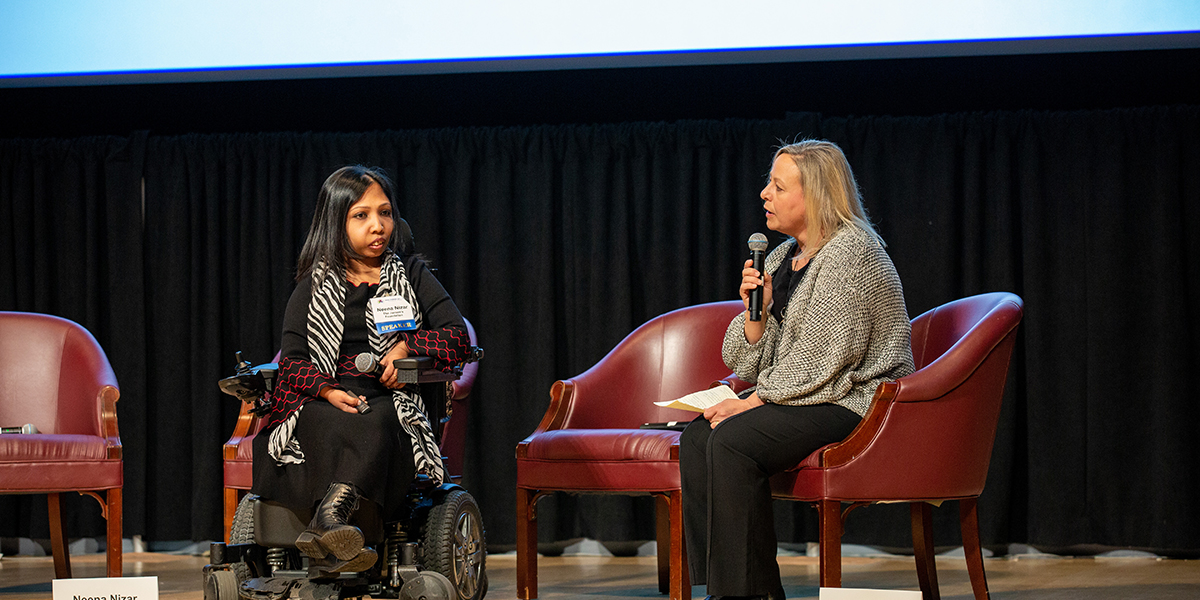Paving the Way for Ultrarare Bone Disease Treatment Trial
May 21, 2024
Clinicians will soon start testing a possible new therapy for an ultrarare bone disease at the NIH Clinical Center. This milestone is thanks in part to the efforts of NCATS scientists in the Therapeutics for Rare and Neglected Diseases (TRND) program.
The disease, Jansen Metaphyseal Chondrodysplasia, affects only about 30 people worldwide, though the exact number is not certain. In Jansen disease, parts of bones in the arms and legs develop abnormally, leading to short stature, bowed legs, and deformed joints. The disease is caused by defects in a protein called the parathyroid hormone (PTH) receptor, which is present in high levels in bones and kidneys. This receptor binds to two proteins: PTH, which regulates the calcium level in the body, and PTH-related peptide (PTHrP), which affects bone growth. Because the PTH receptor is always turned on in people with Jansen, affected individuals are short in stature and can have misshapen bones. They also have high levels of calcium in the blood and urine. Over time, people with Jansen may develop hearing and vision issues, kidney stones and chronic kidney disease. Jansen has no effective treatment, and frequent surgeries are needed throughout life.
NCATS has been working with researchers at Massachusetts General Hospital (MGH) and the National Institute of Diabetes and Digestive and Kidney Diseases (NIDDK) to find a treatment for Jansen. In October 2023, the U.S. Food and Drug Administration (FDA) gave the green light to an Investigational New Drug (IND) application — necessary for a therapy to be tested in patients — for a candidate peptide drug, Parathyroid Hormone-Inverse Agonist (PTH-IA). An “inverse agonist” turns off a PTH receptor that is working overtime in Jansen.
MGH researchers Harald Jueppner, M.D., and Thomas Gardella, Ph.D., first found the cause of Jansen more than 25 years ago. They then started to develop PTH-IA, a promising investigational drug that they hoped to one day test in patients. Yet, the development was slow, and progress seemed to stall.
The project was jumpstarted after meeting with patient–advocate Neena Nizar, Ed.D., who leads the patient advocacy organization, the Jansen’s Foundation. Nizar and the foundation began working with the MGH investigators. At Nizar’s urging, Jueppner, Gardella and their colleagues submitted a proposal to work with TRND to speed PTH-IA’s development.
The MGH team had previously developed a mouse model of the disease and treated it with PTH-IA and found that mouse bone structure improved. They then asked for a pre-IND meeting with the FDA to explore what was needed to further develop PTH-IA and test it in people. The pre-IND meeting is an early discussion with the FDA that focuses on what might be needed to move along a drug’s development. The FDA gives feedback on what information it expects in an IND application to support a clinical trial.
According to Richa Lomash, Ph.D., in the NCATS Therapeutic Development Branch (TDB), the FDA recommended more work to advance PTH-IA’s development. “We still needed a thorough clinical plan, which was challenging given the small patient population,” she explained. “Two years after the pre-IND, FDA reviewed what we had done, including our preliminary toxicology studies. The feedback helped us put together the necessary preclinical studies and data for the IND submission with continued project management, and scientific and regulatory support from NCATS for this project.”
TDB Acting Director Elizabeth Ottinger, Ph.D., said the opportunity to collaborate with both the researchers and the patient foundation was crucial.
“We worked closely with the Jansen’s Foundation and the clinical team [at MGH and NIH] from the beginning to understand the patient perspective as well as the science,” she said. “This collaborative engagement helped to speed the development of PTH-IA and allow it to be handed off more smoothly for clinical testing.”
Jueppner praised the expertise and resources that NCATS provided. “That included the PTH-IA synthesis, the toxicology testing, putting the IND application together and overall project management … all this despite a pandemic,” he said. “Each team member has a specific and needed expertise that is crucial for the project’s success.”
“Without the NCATS team’s support and guidance, ultrarare diseases like Jansen would struggle to move into clinical trials,” said Nizar. “We are delighted to be able to get this treatment into the clinic as soon as possible.”
NCATS was also instrumental in getting an FDA designation for PTH-IA as a drug for a “Rare Pediatric Disease” in February 2023. This was followed by an Orphan Drug Designation in March 2023. Both designations provide financial incentives that can encourage a company to develop PTH-IA as a therapy for Jansen.
NIDDK collaborator Smita Jha, M.D., will oversee the clinical trial, which should begin this summer. For now, only two adult patients will participate; the trial will move to children later. At the same time, NCATS is doing a six-month toxicology study of PTH-IA in mice, as patients will likely need the drug throughout their lifetime.
“We don’t know if PTH-IA will only help adults or children or both,” Jha said. “We also need to find out what aspects of the disease the drug might help. Does it lower serum calcium? Reduce kidney stones? We’re waiting to see if and how it works before we can think about commercial availability.”



